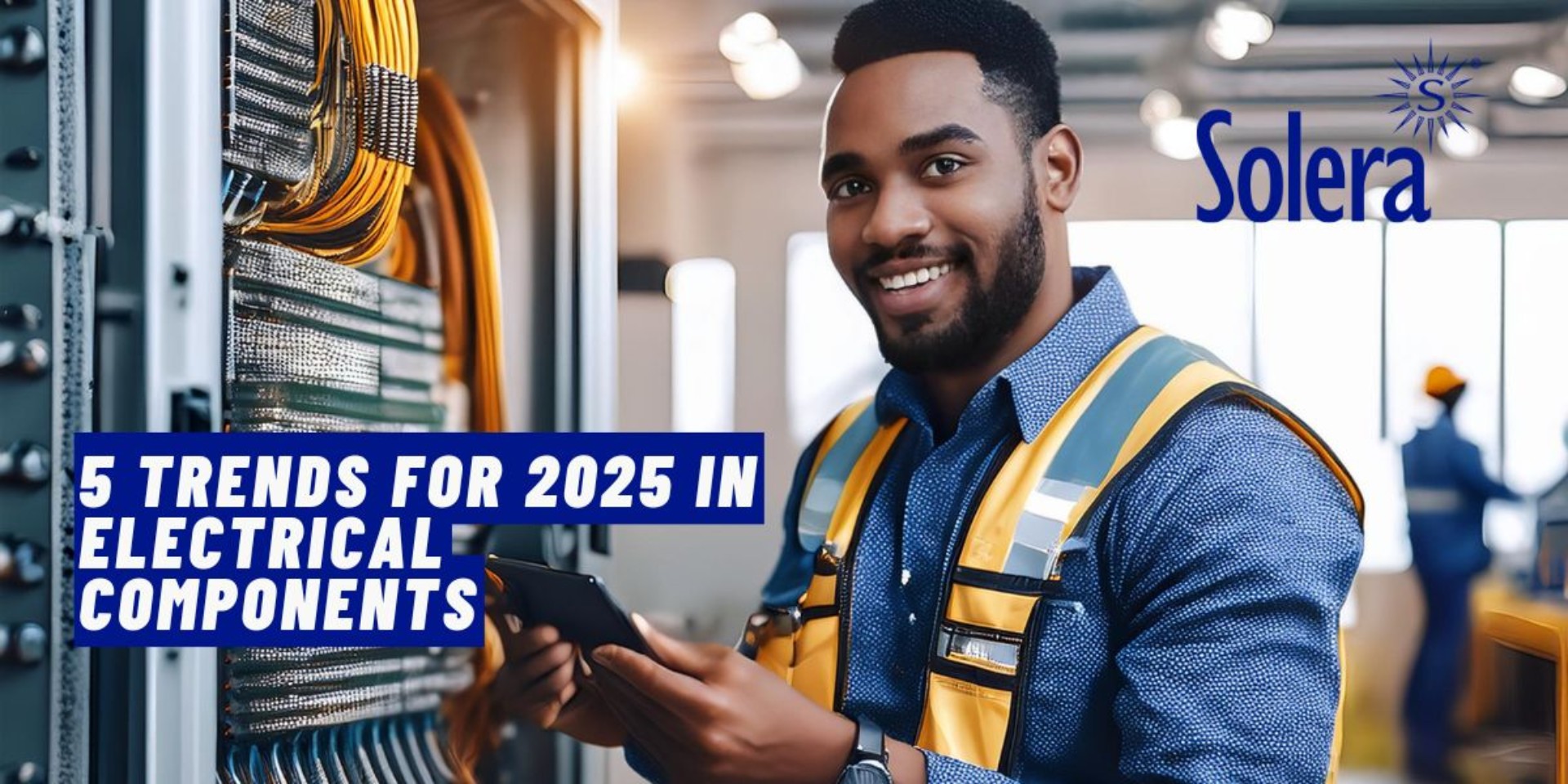The electronic components industry is undergoing a transformation driven by technological advances, sustainability demands, and the need for efficiency.
Installers face unprecedented changes in their projects, from integrating smart technologies to adopting eco-friendly solutions. Understanding these trends is vital to navigating this dynamic landscape.
1. Sustainability and Halogen-Free Materials: Embracing Environmental Responsibility
Sustainability has become a core focus in the design and manufacturing of electronic components. Regulations aim to minimize environmental impact by mandating the use of recyclable and eco-friendly materials. Halogen-free components are gaining popularity due to their safety in fire situations and recyclability.
Impact on Installers
Installers must adapt to eco-friendly materials, meeting stricter regulations while catering to growing customer demand for sustainable solutions.
- Tighter regulations: Stricter international standards drive a shift toward safer, more sustainable options.
- Customer awareness: Increasingly, consumers prefer solutions with lower environmental impact.
- Durability and recycling: Halogen-free materials enhance durability and ease of recycling, reducing electronic waste.
By 2025, installers will primarily work with sustainable components, contributing positively to the environment.
2. IoT and Connectivity: The Future of Smart Installations
The Internet of Things (IoT) is revolutionizing all sectors, including electrical installations. Connected devices enable system automation, remote monitoring, and real-time adjustments. Smart homes and buildings lead this trend, requiring installers to adapt to new technologies.
IoT's Impact on Electrical Installation
Connectivity transforms how electrical systems are installed and managed. Installers must familiarize themselves with IoT platforms and automation technologies.
- Real-time monitoring: Systems can be remotely monitored, enabling early fault detection and energy optimization.
- Building automation: Smart systems adjust lighting, heating, and ventilation, improving energy efficiency and comfort.
- Interoperability: IoT products are designed for seamless integration into existing infrastructures.
Installers must master IoT technologies to remain competitive in a digitally-driven market.
3. Modularity and Customization: Flexibility in Installations
With growing demand for personalized solutions, modularity has become a key trend. Modular systems allow installers to provide highly flexible solutions tailored to specific customer needs.
Advantages of Modular Systems
Modular components simplify installation and reduce complexity, saving time and minimizing errors.
- Ease of installation: Customizable configurations cater to client requirements efficiently.
- Cost savings: Modular solutions reduce costs by using only necessary components.
- Scalability: Systems can grow or be upgraded as client needs evolve.
Embracing modularity will enable installers to capitalize on opportunities in both large and small projects.
4. Renewable Energy: Driving the Energy Transition
The shift toward renewable energy is fueling demand for specialized components in photovoltaic, wind, and other clean energy projects. Investment in renewable solutions is booming, especially in residential and industrial sectors.
Specialized Products for Renewables
Electrical systems must handle renewable energy loads and conditions, requiring advanced components.
- Solar energy panels and enclosures: Advanced electrical enclosures integrate efficiently with photovoltaic systems, enhancing safety and energy output.
- Durable connectors: Specialized connectors withstand extreme conditions in solar and wind installations, boosting reliability.
Installers need expertise in renewable energy solutions to maximize project profitability as renewables dominate the energy landscape.
5. Energy Efficiency: Optimizing Resources and Reducing Costs
Energy efficiency remains a priority in electrical installations. Components designed to optimize energy consumption not only benefit the environment but also provide cost advantages for customers.
Strategies for Energy Efficiency
Advanced energy control systems and low-power components help businesses and homes reduce operational costs.
- LED technology and advanced semiconductors: These innovations significantly cut energy consumption in lighting and other systems.
- Energy management solutions: Real-time monitoring and control of energy use improve resource optimization and cost savings.
In 2025, installers offering energy-efficient solutions will gain a competitive edge by addressing both ecological and economic needs.
Conclusion: Adapting to Changes for Success
In 2025, the electronic components industry is evolving rapidly, with sustainability, IoT, modularity, renewables, and efficiency leading the charge. Installers must embrace these trends to thrive in a competitive market.
With over 55 years of specialists in electrical material manufacturing, Solera stays ahead of these innovations, offering advanced solutions in electronic components, modular systems, and renewable energy products. By prioritizing installer needs, Solera stands as a trusted partner to navigate the challenges of 2025 and beyond.
